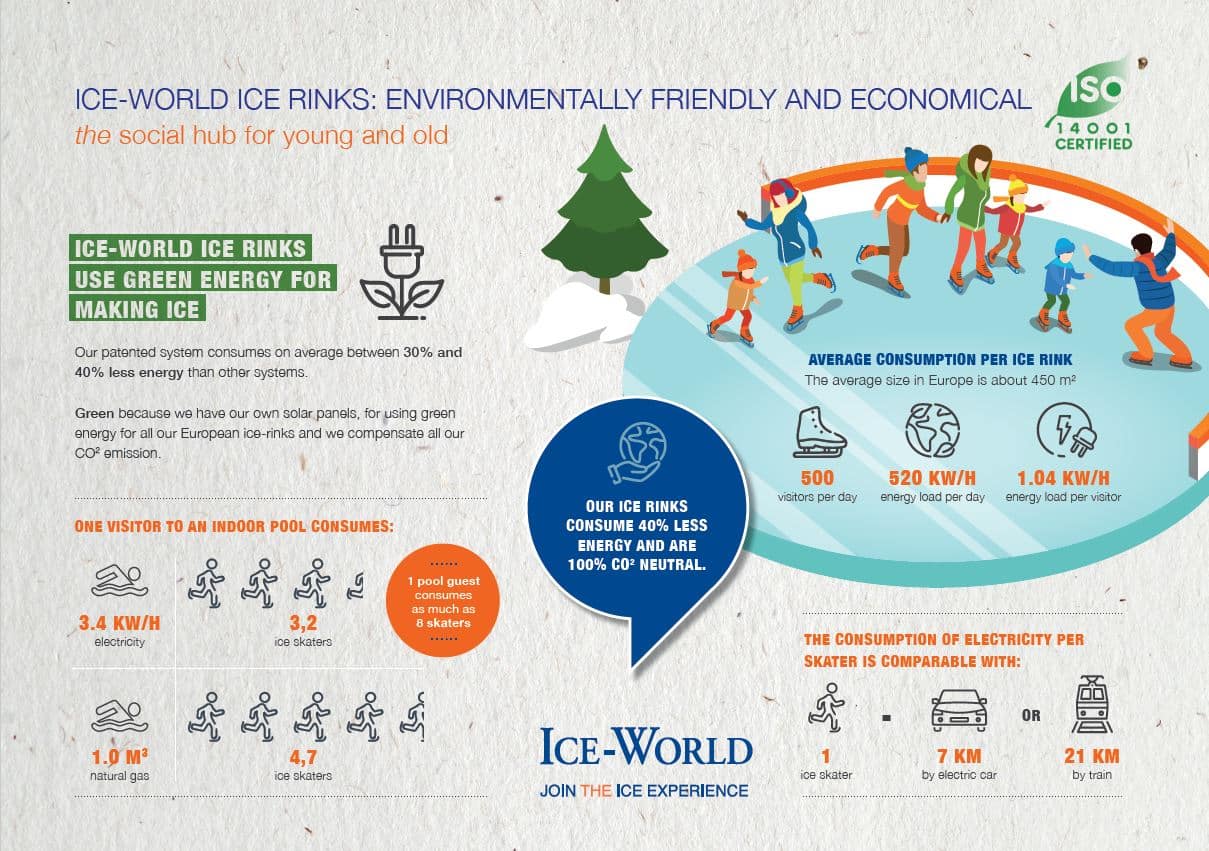More energy efficient and sustainable
First of all, Ice-World uses green energy generated by wind turbines and our own 6.000m2 of solar panels. In addition, we compensate our CO2 emissions via buying carbon credits every year.
How much electricity does an ice rink really consume?
We did the math: an average ice rink of 450 m2 that we build in different cities or amusement parks uses as much in 30 days as 6 families use in a year. During that period the ice rink is used by an average of 15,000 skaters and attracts between 30,000 and 40,000 visitors. Besides providing a festive atmosphere and entertainment, this also has a positive effect on social cohesion and the local economy. Last but not least, it promotes physical exercise and outdoor sports. An ice rink and an ice event have many benefits!
Compare that to the 3.4 kWh of electricity and the 1.0 m3 of natural gas that a visitor to an indoor pool consumes. That means one pool guest consumes as much energy as 8 skaters.

If you put the following 7 energy-saving measures into practice you can save more energy, making skating even more sustainable:
1. Place insulation under the ice rink
This way the ice rink loses less cold at the bottom. Also make sure that the wind cannot blow under the rink platform. Seal the sides of the platform. This creates a layer of cold air that serves as an additional natural insulation of the ice rink.
2. Set the chiller to a higher temperature
At night, it is often colder, and the wind is not as strong. This allows you to set the chiller’s set point a little higher (sometimes even to switch it off). Just remember to return the temperature to the correct set point in the morning!
Always give the chiller enough space for ventilation. “Do not place construction fences or any other material right next to it.
3. Remove the water from the ice rink when it rains
This prevents rainwater from freezing and thickening the ice. Keep the ice surface between 7 and 8 centimeters. If the ice is thicker, the chiller will use more energy.
4. Don’t remove too much ice scraps
Ice scraps can also serve as insulation. Keep the edges of the ice rink clear so that no dam is created that prevents the water from running off the rink. Join our ice master training day and learn all about ice management!
5. Place the ice rink (partially) in a marquee
An ice rink protected from wind, sun, and rain uses far less energy. A marquee also guarantees an open ice rink in all weather conditions.
6. Insulate buffer tank and pipes
Insulating the pipes and buffer tank ensures that as little cold as possible is lost before the glycol enters the ice rink.
7. Use closed barriers
Especially for outdoor rinks, there is an advantage of using closed barriers over wooden barriers as they protect the ice surface better from the wind.
Let’s go for it
With current energy prices, these tips make more money than they cost. In addition, they might help you in discussions about the “high” energy consumption of an ice rink. Let’s go for it!






 Deutsch
Deutsch Nederlands
Nederlands